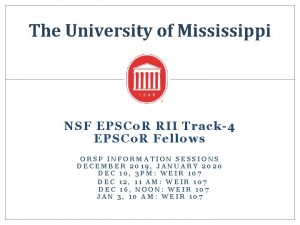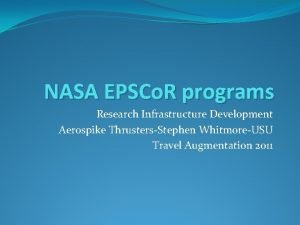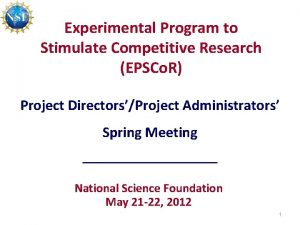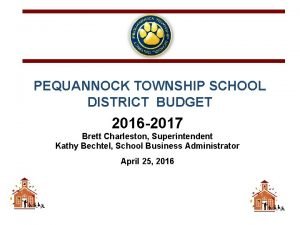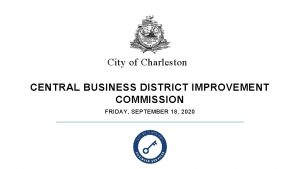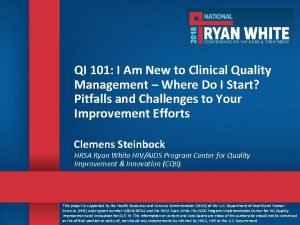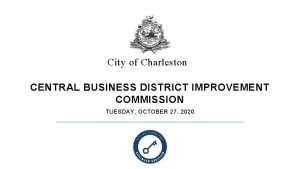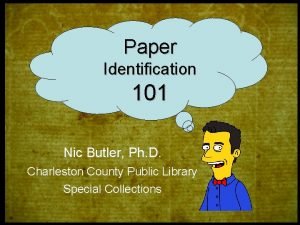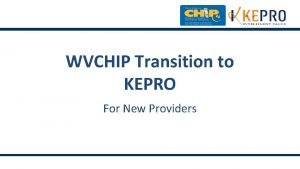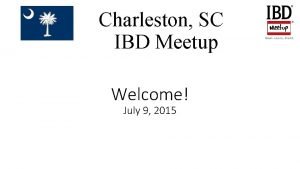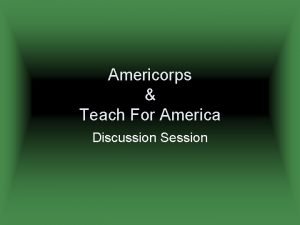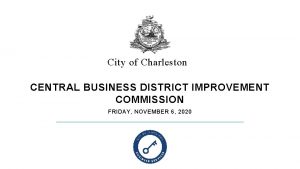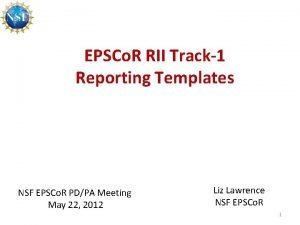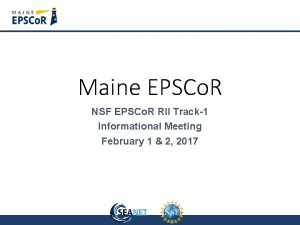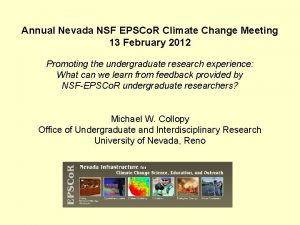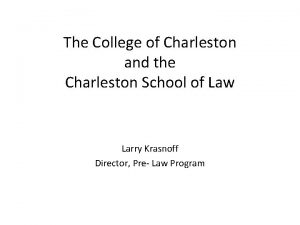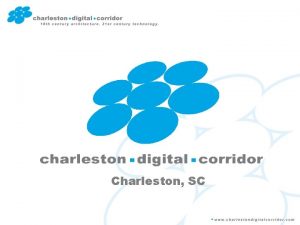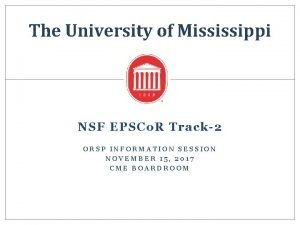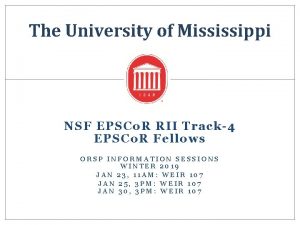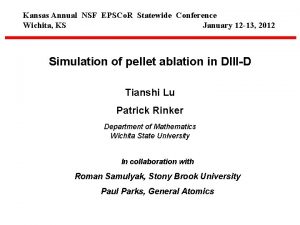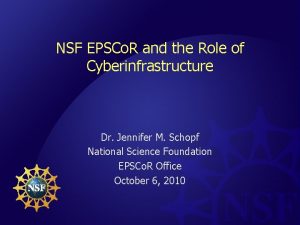GOVERNANCE NSF EPSCo R PDPA Meeting Charleston WV












- Slides: 12

GOVERNANCE NSF EPSCo. R PD/PA Meeting Charleston, WV October 31, 2018

PANEL MEMBERS • Mel Ustad: South Dakota • Rick Schumaker: Idaho • Kevin Gardner: New Hampshire

BACKGROUND & OBJECTIVES • Background • NSF RFP Language • NSF EPSCo. R Successful Management Strategies: June 2003 • EPSCo. R Governance Survey Results • Objectives • Discussion of Best Practices • Lessons Learned • Potential Update of 2003 Document

NSF EPSCOR RFP LANGUAGE • “…Each jurisdiction must establish and utilize an EPSCo. R steering committee that works closely with leaders in academia, government, and the private sector. The committee will identify potential R&D improvement strategies and activities that are consistent with the S&T Plan and most likely to advance the development of a nationally competitive research capacity…” • “…In preparation for submitting a proposal, the EPSCo. R steering committee of the jurisdiction is expected to have undertaken a recent comprehensive analysis of the strengths, barriers, and opportunities for further development of its institutions (including a wide range of organizations, universities, schools, and industries) in support of overall objectives in research, education, and innovation. The steering committee should evaluate the maturity of ongoing efforts as well as the potential new research directions and their alignment with the STEM research priorities identified in the jurisdiction S&T plan…”

NSF EPSCOR RFP LANGUAGE • “…Essential to enhancing the competitive position of a jurisdiction’s research and education in science and engineering is a well-designed, jurisdictionwide, S&T Plan. The S&T Plan must be officially accepted or approved at the jurisdiction level, either via the EPSCo. R jurisdiction steering committee or a governing official or body acting on behalf of the jurisdiction, to submit an RII Track-1 proposal. The S&T Plan establishes jurisdiction-wide research priorities, including specific goals and objectives, and provides a framework that guides the jurisdiction's utilization of resources from EPSCo. R and other stakeholders to achieve them…” • “…The S&T Plan should be informed by the jurisdiction's Economic Development Plan (if applicable) and should describe innovation pathways for bringing outputs and outcomes of the proposed RII Track-1 research to the marketplace…

NEW HAMPSHIRE • 17 members. 4 Government, 6 education, 5 business and industry, and 3 at large. • Track 1 RII matched by university and state university system. • Initial S&T plan was 2011. Updated in 2014. In 2016 produced a new plan called the University Research and Industry Plan. This has received great traction in the state by the Business and Economic Affairs office and university.

IDAHO • Idaho EPSCo. R Committee first appointed by the State Board of Education (SBOE) in 1988. • 16 members – majority private sector; plus commerce, academic, national lab, and legislative. • Track-1 RII non-federal match received by legislative appropriation through Higher Education Research Council, also under SBOE. • Initial Idaho S&T Plan in 2000; most recently updated in 2017 for Higher Education Research

SOUTH DAKOTA • REACH Committee-501 -c 3 formed 1987 • 36 members-Majority Private Sector • 9 member Executive Committee—Manage all state research investments • 2003 initial S&T Plan-2010 Initiative, Updated 2010 & 2016

NSF EPSCOR SUCCESSFUL MANAGEMENT STRATEGIES: JUNE 2003 • Governance Recommendations • Committee Size, Composition & Terms • Committee Member Selection Process • Committee Chair • Orientation of New and Existing Members • Committee Structure • By-Laws-Operating Guidelines • Committee Roles and Responsibilities • Meetings and Communication

RECOMMENDATIONS & SURVEY RESULTS 2003 DOCUMENT SURVEY • 12 members • 4 -36 members • Diverse institutions, disciplines, demographic, political, geographic • Academic, State, Industry, Legislators, Federal Research Facilities • Based on legislation or by-laws • Most Government report to Board of Ed • Fixed staggered terms • Most less than 5 years • Oversee all EPSCo. R programs • Most all EPSCo. R—Some state programs • Prioritizing: Consistent with academic, state and federal plans and priorities • ST Plan: Most done by Steering Committee-Some involve public meetings

SURVEY RESULTS • State EPSCo. R Director and NSF EPSCo. R PI same person • EPSCo. R office size ranges from 2 -10 • EPSCo. R office based at university and Board of Regents 50/50 • All involve Research and Minority Institutions. Half involve PUI and state agencies. • Match provided by appropriation 50% and BOR and University 50% • EPSCo. R office funded by NSF 50% and state/university 50%

DISCUSSION • What aspects or strategies of governance have been most effective? • What are the barriers and challenges to effective Governance? • What are your ideas for next steps that would help your jurisdiction?
